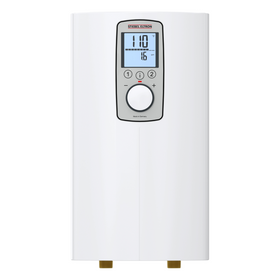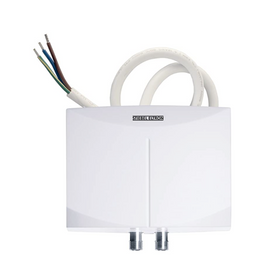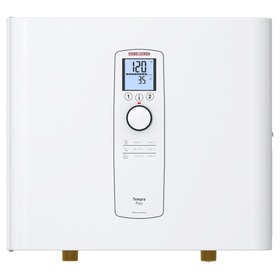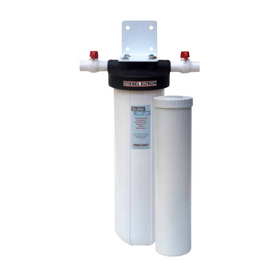
Home Heat Loss: A Complete Guide To Avoid It
Last Updated: Mar 10, 2025Nobody enjoys being cold in their own house. Typical homes in the United States and Canada lose significant amounts of the heat they produce from their central heating units due to improper insulation and construction. So, to keep their house warm, many people are forced to increase the thermostat temperature settings. These actions lead to enormous amounts of energy waste due to the heat that escapes the home. According to data from the US Energy Information Administration (EIA), about 27% of all US households' energy consumption came from space heating units. Finding ways to improve our homes' insulation to minimize heat loss is an essential aspect of an energy-efficient and sustainable home.
Unfortunately, the problem is that many people have no idea where the heat is escaping from their homes. While you may be able to feel a draft of cold air passing through a poorly built window, most home heat loss occurs in less visible areas. Below, we look at the most common places where heat loss occurs in homes. We offer suggestions on improving the insulation in your home to reduce heat loss, increase energy efficiency, and save money on your monthly heating bill.
Table of Contents
- How Much Heat Do We Lose Through Our Walls?
- How Much Heat Do We Lose Through Our Basements and Floors?
- How Much Heat Do We Lose Through Our Attics?
- How Much Heat Do We Lose Through Our Windows and Doors?
- A Quick Guide to Insulation Options

How Much Heat Do We Lose Through Our Walls?
Roughly 35% of all heat loss in a home occurs through the walls. This loss generally occurs through conduction or physical contact since a home's walls are in physical contact with the colder temperatures outside. The heat energy inside your house is primarily transferred by conduction through the walls. Most homebuilders try to slow this natural process by filling the space between the outside and inside walls with some material with natural insulation properties. Unfortunately, for homes built with poor wall insulation, it can be an expensive remodeling job. You'll have to take off all of the interior drywall, replace the insulation, and then purchase new interior walls.

How Much Heat Do We Lose Through Our Basements and Floors?
About 15% of all heat loss in a home is through the floors and basement if your home has one. Foundation walls for a basement and the cement slab, which sits just underneath the floors of your home, have inferior insulation capabilities. "R-Value" measures insulation capacity. An 8-inch poured concrete slab or wall will only have an R-value of a little over 1, meaning that heat will quickly be lost through these spaces. However, most houses have little to no insulation in the floors of a home, making this a significant source of heat loss. Here's a quick Rise guide to insulating your basement like a pro.

How Much Heat Do We Lose Through Our Attics?
Hot air rises, making much of the heat we lose in our homes escape through the attic. An estimated 25% of all heat loss occurs through the attic or roof of a home. Cracks or holes in an attic, along with improperly placed vents, allow for significant amounts of heat loss through the attic space. In addition, improper ventilation in attics leads to even more heat escaping. One Canadian company is attempting to provide a heat loss map for many Canadian cities. They enable homeowners to search for their homes via Google maps and see an infrared image of their houses' roofs. This image will allow them to determine what areas in their roofs and attics are letting heat escape. While this project is still expanding into more cities, homeowners can purchase an infrared scanner or download an infrared scanner app to their smartphone to use indoors. They offer information regarding where exactly heat is escaping through your attic. Here's a quick Rise guide to insulating your attic.

How Much Heat Do We Lose Through Our Windows and Doors?
Another 25% of heat loss occurs through the windows and doors in a house. This heat loss is primarily due to air leaks and cracks around the foundation that can be repaired by regularly caulking the joints around window and door frames. In addition, triple-glazed windows can be very useful in lowering the amount of heat loss through windows. Since air is a poor conductor of heat, these windows have three glass panes separated by about 1/3 of an inch. This space between the individual pieces of glass and added gasses serves as natural insulation to reduce heat loss through the windows.

A Quick Guide to Insulation Options
Once you have determined the main areas in your home that are causing heat loss, the best way to limit that heat loss is through proper insulation. There are dozens of different types of insulation materials on the market, from the most traditional fiberglass insulation to cellulose to spray foams and complete structural insulated panels. Many companies are now providing sheep's wool and cotton insulation options for people looking for more natural insulation options. For more on insulation, check out our product pages or our insulation guides:
Tobias Roberts
Tobias runs an agroecology farm and a natural building collective in the mountains of El Salvador. He specializes in earthen construction methods and uses permaculture design methods to integrate structures into the sustainability of the landscape.










